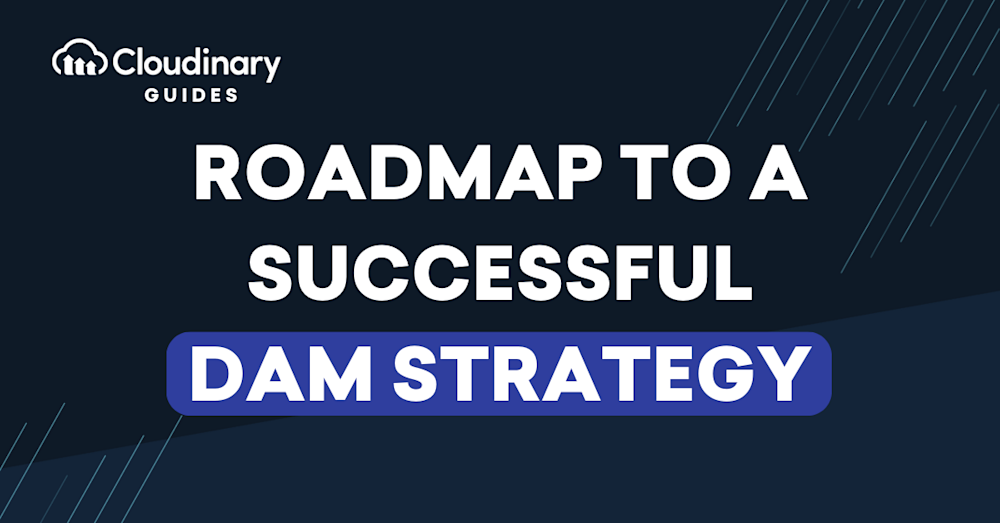A Comprehensive 12-Step Guide to Creating a Successful Digital Asset Management Strategy
Organizations are continually creating and managing a plethora of digital assets to keep up with their customers. From images and videos to documents and presentations, these assets play a vital role in conveying your brand’s message, engaging customers, and streamlining internal operations. But let’s face it, managing all these assets can be daunting without a well-planned Digital Asset Management (DAM) strategy.
A well-planned strategy is crucial for maximizing the value of your assets, minimizing redundancies, and ensuring your team can find and utilize the right resources when needed. In this article, we’ll walk you through a comprehensive 12-step process to create a successful DAM strategy that not only keeps your digital assets organized and easily accessible but also aligns with your organization’s objectives.
Step 1: Define the Objectives
Before diving headfirst, it’s essential to take a step back and clearly define the objectives of your DAM strategy. Start by asking yourself, “What are the primary goals we want to achieve with our digital assets?” These could range from improving collaboration and streamlining workflows to enhancing brand consistency and ensuring secure access to assets across the organization.
Once you’ve pinpointed the goals, make sure they align with your organization’s overall objectives. This will ensure that your DAM strategy not only contributes to your digital asset management’s success but also supports your business’s broader goals. By establishing clear objectives from the get-go, you’ll have a solid foundation to build your DAM strategy and measure its success down the line.
Step 2: Identify Stakeholders
A successful Digital Asset Management strategy involves the collaboration and input of various stakeholders within your organization. To ensure a smooth implementation, it’s crucial to identify and list all relevant parties who will play a role in managing your digital assets. These stakeholders may include creatives, marketers, IT professionals, and external partners such as agencies or freelancers.
Once you’ve identified the key players, take the time to clarify their roles and responsibilities within the DAM strategy. This will help to establish clear expectations, streamline communication, and foster a sense of ownership and accountability among stakeholders. Involving the right people and defining their roles early on will set the stage for a more effective and collaborative approach to managing your digital assets.
Step 3: Review Current Assets
Now that you’ve defined your objectives and identified your stakeholders, it’s time to take a closer look at your existing digital assets. Start by thoroughly evaluating your current assets, including images, videos, documents, and any other relevant digital files to your organization. This assessment should examine your assets’ quality, relevance, and organization.
During this evaluation, be on the lookout for gaps and areas for improvement. Are there any missing assets that need to be created or acquired? Are there outdated or duplicate files that can be removed or updated? Identifying these issues early on will help you streamline your digital assets and ensure that your DAM strategy addresses any shortcomings. By taking stock of your current assets, you’ll gain valuable insights that will inform the next steps in your Digital Asset Management journey.
Step 4: Establish Metadata and Taxonomy
Organizing your digital assets effectively is crucial for a successful DAM strategy, and that’s where metadata and taxonomy come into play. Start by defining metadata standards for your assets, which may include information such as file names, descriptions, keywords, and usage rights. Establishing clear metadata guidelines will make it easier for your team to search for, access, and manage assets, ensuring everyone is on the same page.
Next, develop a consistent taxonomy for organizing your assets. This involves creating a hierarchical structure of categories, subcategories, and tags that reflect the content and purpose of your digital files. A well-thought-out taxonomy will make it easier for stakeholders to locate and use assets and help maintain a clean and organized digital asset library. Establishing robust metadata and taxonomy standards will lay the groundwork for a more efficient and user-friendly DAM system.
Step 5: Determine Access and Permissions
As your digital asset library grows, it’s essential to establish clear user roles and access levels to ensure that the right people have access to the right assets. Start by defining various user roles within your organization, such as administrators, content creators, and content consumers. Assign appropriate access levels to these roles, outlining which assets they can view, edit, or download. This will help maintain order within your DAM system and prevent unauthorized access or accidental modifications.
In addition to setting user roles and access levels, it’s crucial to implement security measures to protect your digital assets. This may include measures such as password protection, two-factor authentication, and encryption. By prioritizing security, you’ll safeguard your valuable assets from potential threats and ensure that your organization’s digital resources remain secure and accessible only to authorized users.
Step 6: Choose a Digital Asset Management System
With your objectives, stakeholders, assets, metadata, taxonomy, and access levels defined, it’s time to explore the world of Digital Asset Management systems. Begin by evaluating available platforms and solutions on the market, taking into account factors such as features, scalability, user-friendliness, and integration capabilities. Remember that not all DAM systems are created equal, so finding the one that best aligns with your organization’s unique needs and goals is essential.
As you compare different systems, consider how well each option addresses your specific requirements and pain points. Think about how the platform will support your organization’s growth and adapt to your evolving needs. By carefully weighing the pros and cons of each system, you’ll be able to select the most suitable DAM solution for your organization, setting the stage for a successful and efficient digital asset management strategy.
Step 7: Develop a Workflow
With your Digital Asset Management system in place, it’s time to design a workflow for managing your digital assets. This involves creating a clear, structured process that outlines how assets are created, uploaded, organized, accessed, and archived within your DAM system. Consider the various stages of your assets’ lifecycle and the roles and responsibilities of your stakeholders in each step.
As you develop your workflow, prioritize efficiency and user-friendliness. Strive to create a process that minimizes bottlenecks, streamlines communication, and simplifies asset management for all stakeholders involved. By designing an effective workflow, you’ll ensure that your team can easily navigate your DAM system and make the most of your digital assets, ultimately contributing to the overall success of your Digital Asset Management strategy.
Step 8: Set up a Governance Structure
A well-defined governance structure is essential for the long-term success of your Digital Asset Management strategy. Start by establishing guidelines and best practices for asset management within your organization. These guidelines may cover file naming conventions, metadata standards, acceptable formats, and usage rights. Setting clear expectations and rules will promote consistency and reduce the risk of confusion or mismanagement.
In addition to defining guidelines, assigning roles and responsibilities for maintaining and enforcing your DAM strategy is crucial. This may involve appointing a DAM administrator or a team responsible for overseeing the system’s day-to-day operations, ensuring adherence to established guidelines, and addressing any issues. By establishing a strong governance structure, you’ll create a solid foundation for your DAM strategy, ensuring that your organization continues benefitting from efficient and effective digital asset management.
Step 9: Train the Team
Now that you’ve established your Digital Asset Management strategy, it’s time to bring your team on board. Training and resources for your stakeholders are essential to ensure everyone is familiar with the new system and processes. Begin by organizing training sessions, workshops, or webinars covering the basics of your DAM system, including how to upload, search for, and manage assets and follow the established guidelines and workflow.
Don’t forget to provide ongoing support and resources, such as user guides, cheat sheets, or video tutorials, to help your team members become confident and proficient in using the DAM system. Investing in training and support will empower your team to make the most of your digital assets, leading to increased efficiency, collaboration, and overall success in your organization’s Digital Asset Management strategy.
Step 10: Monitor and Measure Success
To ensure that your Digital Asset Management strategy is delivering the desired results, it’s essential to monitor and measure its success. Begin by setting up key performance indicators (KPIs) that align with your organization’s goals and objectives. These KPIs may include metrics such as asset usage, search efficiency, user adoption rates, or time saved in asset management tasks.
Once you’ve established your KPIs, prioritize reviewing and analyzing the data collected regularly. This will help you assess the effectiveness of your DAM strategy and identify any areas that may need improvement or adjustment. By staying proactive and data-driven in your approach, you’ll be better equipped to optimize your Digital Asset Management strategy and ensure that it continues to provide value to your organization.
Step 11: Optimize and Update the Strategy
A successful Digital Asset Management strategy is not a one-time effort but an ongoing process requiring continuous refinement and improvement. Based on the data you’ve collected and feedback from your stakeholders, identify areas of your strategy that can be optimized or updated. This may include adjustments to your workflow, metadata standards, user access levels, and the implementation of new features or integrations within your DAM system.
In addition to making data-driven improvements, stay informed about industry best practices and trends in digital asset management. By keeping up-to-date with the latest developments and innovations, you’ll ensure that your DAM strategy remains cutting-edge and continues to serve your organization’s needs effectively. Embracing a proactive and adaptive mindset will help you maintain a successful Digital Asset Management strategy that evolves alongside your organization’s growth and changing requirements.
Step 12: Plan for Future Growth
As your organization grows and evolves, so too will your Digital Asset Management needs. To ensure that your DAM strategy remains effective and relevant, planning for future growth is crucial. This involves making sure that your strategy is scalable and adaptable, allowing you to accommodate an expanding library of digital assets, new user roles, or changing workflows as necessary.
Additionally, prepare for potential changes in technology and organizational requirements. Stay informed about emerging trends and innovations in the DAM landscape, and be ready to adopt new tools or systems that can enhance your strategy’s effectiveness. Maintaining a forward-thinking approach and planning for future growth will ensure that your Digital Asset Management strategy continues to serve your organization’s needs and contributes to its long-term success.
The Final Frame: A Winning DAM Strategy with Cloudinary
In conclusion, a well-planned Digital Asset Management strategy is crucial for organizations seeking to optimize the use, organization, and accessibility of their digital assets. By following the steps outlined in this guide, you’ll be better equipped to develop and implement a comprehensive DAM strategy that aligns with your organization’s goals, streamlines workflows, and promotes collaboration among stakeholders.
Cloudinary can play a pivotal role in your Digital Asset Management strategy by providing a powerful and user-friendly platform for storing, managing, and delivering digital assets. So, invest in the right tools, implement smart strategies, and watch you soar to new heights. Get started with Cloudinary and revolutionize the way you manage your assets today.

